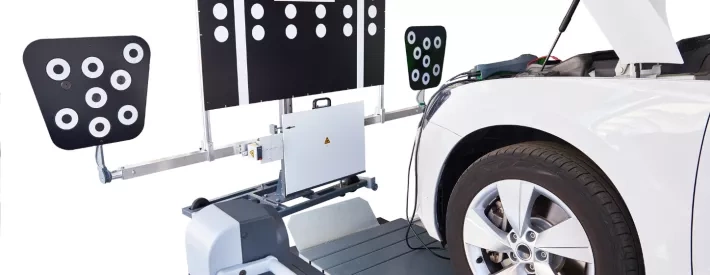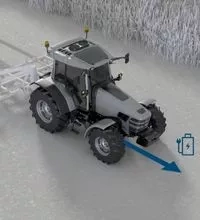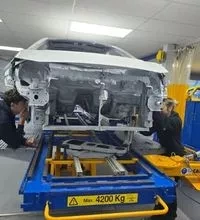Is ADAS the next addition to the MOT?

A bit of history first. The MOT test, introduced in 1960 by the Ministry of Transport, was initially designed to assess the safety of a vehicle’s brakes, steering, and lights, hence the three triangles in the logo. However, with the advent of Advanced Driver Assistance Systems (ADAS), the scope of vehicle safety has expanded significantly.
ADAS encompasses features including automatic braking, lane assist, and parking sensors, and, as of mid-2022, many ADAS features have become mandatory, raising important questions about their role in the MOT test.
ADAS includes various systems that align with the original MOT test criteria of brakes, steering, and lights. Despite this alignment, very few ADAS components are currently checked during the MOT test. This oversight leaves a gap in ensuring the safety and functionality of these advanced systems.
Sensors and cameras, integral to ADAS, do not always indicate misalignment or malfunction unless they are significantly off. This situation necessitates regular calibration, yet vehicles might not display an error indicating the need for such calibration, complicating the detection of issues.
Cost and complexity
Integrating ADAS calibration into the MOT poses significant challenges, primarily due to the costs and time involved. The average cost of an ADAS calibration is around £250, taking at least an hour to complete. In contrast, the maximum price for an MOT test is set at £54.80, with an average duration of 40 minutes. This discrepancy highlights a critical issue: how can MOT stations feasibly incorporate ADAS calibration without incurring losses?
If the MOT test remains priced at £54.80 but includes the additional calibration, MOT stations would face substantial financial losses due to the cost of new equipment and the necessary training for Technicians. Conversely, if the MOT test price were increased to approximately £300 to cover the calibration, it would undoubtedly maintain profitability for MOT stations but such a price hike would likely be met with strong resistance from motorists, particularly given recent government efforts to reduce vehicle maintenance costs.
Beyond financial considerations, there are practical challenges in calibrating ADAS systems. Some vehicles can self-calibrate their ADAS, but most still require a Technician to initiate and oversee the process, often involving specific driving patterns. The shortage of trained ADAS people in the industry exacerbates this issue. Additionally, connectivity problems can hinder calibration; for instance, workshops in areas with poor mobile signals might struggle to connect diagnostic machines necessary for calibration while out on test drives.
What the future holds
ADAS plays a crucial role in vehicle safety, often without the driver even realising its importance. Research shows that motorists mistakenly believe that ADAS is already thoroughly checked during the MOT test, or that their vehicle doesn’t have any ADAS features fitted when it does. Misconceptions that needs urgent correction. So, as reliance on these systems grows, it is imperative to integrate their assessment into routine vehicle safety checks.
Addressing the integration of ADAS into the MOT test requires a multistage approach. Policymakers and industry experts must collaborate to develop a feasible and cost-effective solution. This might involve helping businesses with the cost of ADAS calibration equipment and training for MOT stations through methods such as the super deduction, or implementing a phased approach to gradually include ADAS checks without causing a sudden spike in MOT costs.
Moreover, raising public awareness about the importance of ADAS and its role in vehicle safety is essential. Motorists need to understand that the benefits of these systems far outweigh the costs associated with their maintenance and calibration.
Examining the future of MOT testing is not just a technical necessity, but a vital step towards enhancing road safety. While there are significant challenges, both financial and practical, they are not insurmountable. By addressing them proactively, we can ensure that the MOT test evolves to meet the changing shape of the industry and the technologies in it.
Time to get ADAS qualified? Check out how the IMI can help you grow your skills with its range of courses and qualifications




